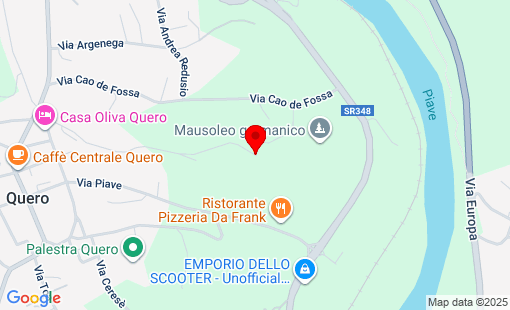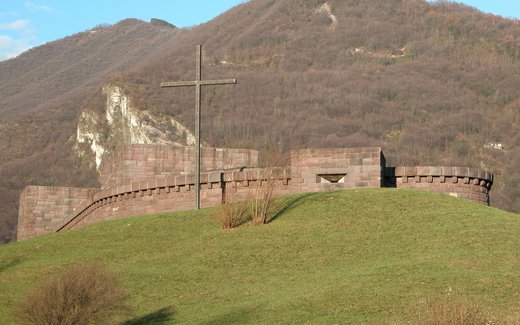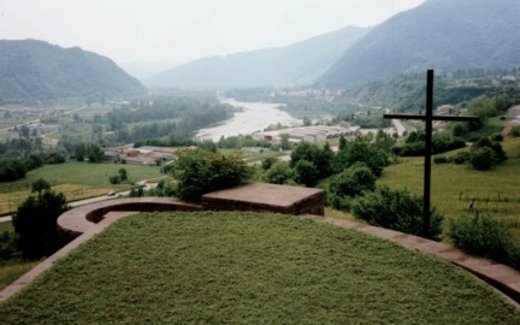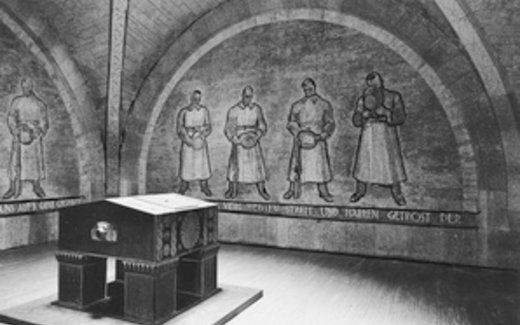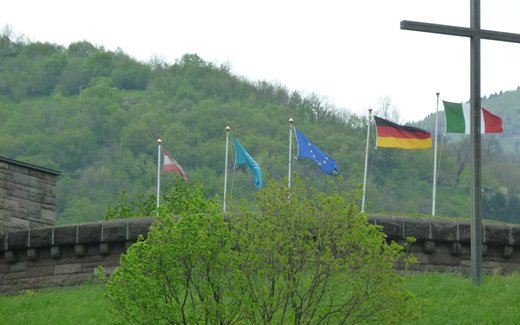The municipality of Quero in the province of Belluno, Veneto, lies on the eastern slope of the
Slope of the Monte Grappa massif on the Piave river. The Quero war cemetery,
inaugurated on May 25, 1939, 3,463 war dead from the First World War are buried there
World War are buried there. The military cemetery is located on the eastern edge of the town
on Via Papa Giovanni XXIII No. 37.
Description of the cemetery
A German-Italian agreement enabled the Volksbund to start building the war cemetery in 1936
the construction of the Quero war cemetery in 1936, which was opened to the public three years later
was opened to the public three years later. The war dead buried there,
Members of the allied German and Austro-Hungarian armies,
lost their lives in the First World War. A characteristic feature of the
Characteristic feature of the war cemetery is its fortress-like construction on a hill above the
Piave river. The memorial room for the dead soldiers is located in a tower
Tower, which is accessible via narrow steps. A double ring of walls, designed as a
A shallow curve from the tower to the bastion of the complex
Bastion. On the other side, a straight wall connects the tower and bastion. The
Ensemble of buildings surrounds a comrade's grave, which is overgrown with cotoneaster plants
overgrown with cotoneaster plants. The bell-shaped memorial room receives indirect daylight
Daylight through a shaft that opens the cross vault of the room at the intersection of two ribs
of two ribs. The central design element of the nevertheless
relatively bright room is a black stone: a lectern decorated with ornaments made of
ornamented lectern made of Swedish granite.
History
The three Piave battles of the First World War took place in the region of the Monte Grappa massif
First World War took place. In November 1917 - with German support - and
in June 1918, the Austro-Hungarian army attempted to break through the Italian
Defense lines and thus defeat Italy. The third
Piave battle in October 1918, however, was an offensive by the Italian army
Army. It ended with the defeat of Austria-Hungary.
Fighting only took place in the north of Italy during the First World War. In the process
more than 16,000 German soldiers lost their lives. They are buried in seven cemeteries run by the
German War Graves Commission. Most of them are
members of the Austro-Hungarian army are also buried there. Another
War cemetery, located on the Pordoi Pass in the Dolomites, was not opened until
completed after the end of the Second World War.
Special feature
The Quero war cemetery belongs to the category of so-called
Castles of the dead. The architect Robert Tischler developed the concept in question
in the 1920s and realized it in several places in the following decades
several locations. Some of these "mortuaries" were also built for the dead of the Second World War
of these "mortuary castles", including in North Africa, Italy and France
France.
